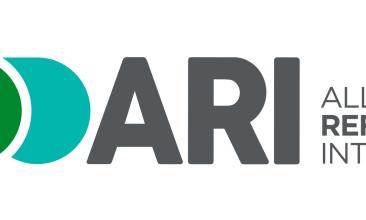Trauma and violence-informed approaches are policies and practices that recognize the connections between violence, trauma, negative health outcomes and behaviours. These approaches increase safety, control and resilience for people who are seeking services in relation to experiences of violence and/or have a history of experiencing violence.
What is trauma?
Trauma is part of the human experience. Trauma is both the experience of, and response to, an overwhelmingly negative event or series of events, including violence.
Trauma is not a disorder but a reaction to a kind of wound. Trauma is beyond an experience that overwhelms an individual’s capacity to cope with negative experiences.
According to the Public Health Agency of Canada, understanding violence and its relationship to trauma helps to:
- Realize that current violence may be a primary cause of trauma responses.
- Not blame and judge people for their reactions to experiences of violence.
- Know the impacts of multiple forms of violence, including racism or discrimination.
- Direct attention to the importance of organizational-level actions and recognize how broader conditions of people's lives (e.g. poverty or unstable housing) increase risk of multiple forms of violence.
- Make systems and organizations more responsive to the needs of all people with trauma.
What is Trauma and Violence Informed Approaches (TVIA)?
Trauma and Violence Informed Approaches (TVIA) are policies and practices that acknowledge the widespread impact of trauma, recognize the connections among various forms of violence, trauma, and negative consequences in health functions and life satisfaction, and foster the potential paths for self-care, resilience, institutional and community capacity building.
Four principles of TVIA are:
- General Practice: Treating everyone as if they have been subject to trauma and violence enhances ‘universal trauma precautions,’ which provide positive support for all people.
- Preventing Re/Traumatization: Doing no harm is the base of all policies and practices in addressing violence and trauma. TVIA is not aimed at treating trauma but preventing further harm by re/traumatization. Service users can have access to services regardless of disclosing their experience of violence and trauma. This principle also ensures that staff care for themselves, and the agency supports staff in attending to that care, while they are providing ethical care and responses to other people’s trauma.
- Fostering Safety: The agency commits to create and ensure emotional, physical, psychological, interpersonal, social, cultural, and systemic safety for all people in all levels of services and service delivery in the environment.
- Continuing Growth and Community Building: A strong belief for human growth and resilience despite adversities guides the agency and staff to create an environment that fosters hope.
Importance of TVIA in Serving Immigrants and Refugees
The global forced migration due to violence has increased and Canada is the global leader in resettling refugees, who are vulnerable to the effects of traumatic events arising from persecution, conflict and displacement. Immigrants and refugees are subject to multiple barriers and further violence, which increase their vulnerabilities to multiple trauma experiences.
The process of transitioning into a new culture may trigger past and/or unresolved trauma. Additionally, people who have survived trauma may not feel comfortable asking for help due to the lack of understanding of their culture by service providers and/or the image of weakness that this may invoke in their own culture.
With this in mind, it is critical for service providers serving immigrants and refugees to be aware of trauma and violence, the impacts on immigrants and refugees, and how to work collaboratively.
How to Apply Principles of TVIA in Serving Immigrants and Refugees?
Providing trauma-informed services considers trauma holistically, in all aspects of service delivery, and places priority on the individual’s safety, choice, and control.
When working with people who have experienced trauma and violence, we need to take a two fold approach:
- Address risk factors /impacts of trauma and violence.
- Actively try to promote protective factors to counteract the impacts of trauma and violence by instilling hope and resilience in service users.
Service providers can counteract violence and trauma by better addressing the following:
- Empowerment: Giving voice to people with trauma experiences is a critical process of empowerment.
- Community Connection: When isolated and left alone, people with trauma and violence experiences often have recurring trauma memories.
- Self-Compassion: Because trauma and violence negatively impact our mind and body, people with trauma and violence experiences often blame themselves for what happened to them.
- Strength, resilience and growth: It is important to keep in mind that people with trauma experiences are more than victims of violence. They are great sources of hope and contributors to communities. The very act of participating in and contributing to the circle of care in the community to fight back against violence will enhance their strengths, resilience and growth.
When working with people, regardless of having information about their trauma experiences, it is critical to keep in mind universal trauma precautions and apply the generalist principle with everyone. Trauma and violence pervasively impact individuals, families, communities, organizations and systems and unfortunately there is no definite end point. Therefore, it is critical to prevent re/traumatization, honour voice and control, foster safety and resilience, and build capacities.

